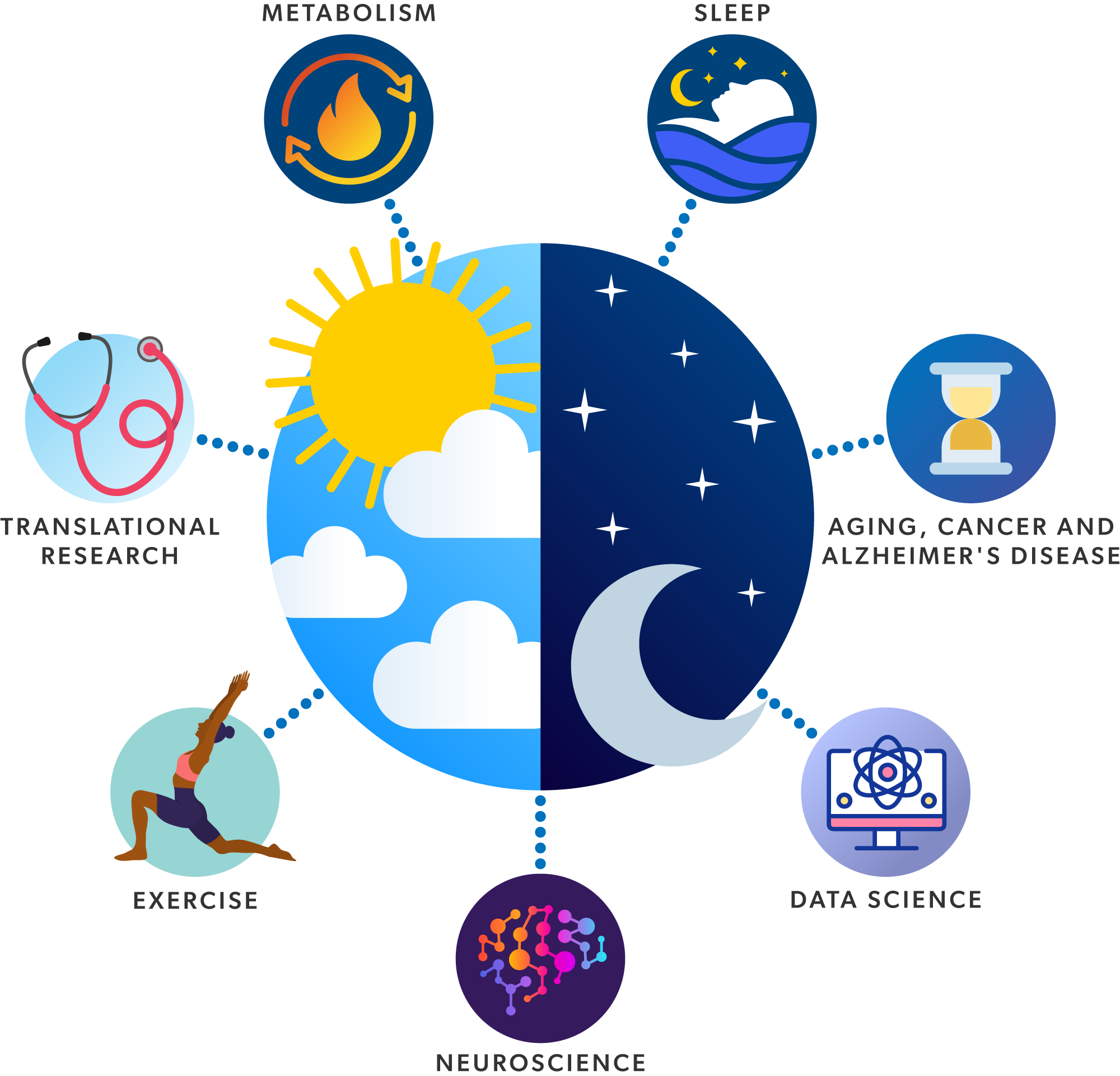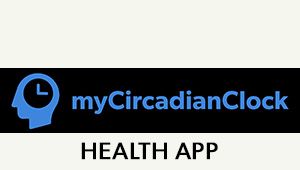Welcome to the Panda lab
Welcome to the Panda Lab!
Our lab studies circadian rhythms which are ~24 hr rhythms regulated by internal biological clocks and they govern almost every aspect of biology in humans and other living organisms. These 24-hour cycles of activity and rest synchronize with the daily light-dark cycle. Our goal is to understand what affects the circadian clock, how the clock works and what the clock affects. When circadian rhythms are chronically disrupted—by such things as artificial light and around-the-clock eating—diseases can result. Our hope is that by leveraging our knowledge of circadian rhythms, we can help improve health.
Understanding circadian science can help individuals be their best selves and feel strong and healthy for a lifetime. Read on for more information about our research groups. Or learn about your own body’s circadian rhythms by participating in our app-based research study, which analyzes how people eat, sleep, and exercise. App users often report losing weight and sleeping and feeling better. Go to mycircadianclock.org for more information or to sign up.

Metabolism
Our studies focus on how circadian regulation of metabolism can be influenced by nutritional timing, disease, and diet. Time-restricted feeding (TRF), is a feeding paradigm in which mice are fed only during their active phase. We use this as a model to study the influence of the timing of food intake and circadian rhythms on metabolic homeostasis.
Sleep
Sleep is a foundational pillar of health and the intricate dance of circadian behaviors plays a crucial role in determining the quality of our sleep, which in turn, significantly impacts our physiological performance. We use behavioral mouse models to delve into topics such as the influence of sleep on immune functions and metabolic processes as well as the effects of dietary timing on sleep quality.
Translational Research
The translational research arm of the lab studies how lifestyle interventions (alone or in combination with medication) can improve age-related diseases in humans, including from pre-diabetes, diabetes, cardiovascular disease, and/or cancer in humans. We use wearable devices and a smartphone app (myCircadianClock), to monitor and implement clinical interventions in participants living in the real world. Our research is focused on using personalized circadian interventions, such as time-restricted eating, to help treat diseases, such as prediabetes/type 2 diabetes, metabolic syndrome, and affective disorders, as well as to help offset the burden of shift work.
Exercise
As part of the Wu-Tsai Human Performance Alliance, our group is dedicated to unraveling the molecular regulation that underpins physical performance, injury prevention, healing, and recovery. We aim to optimize human performance and health outcomes. Currently, we are investigating how sleep disruption, meal timings, and various exercise modalities impact molecular pathways, metabolism, and exercise adaptation on a systemic, multi-organ level, employing state-of-the-art experimental techniques.
Neuroscience
Our lab studies the neuroscientific aspect of how light regulates circadian rhythms in mammals, focusing on both healthy and diseased states. We employ microscopy to study retinal and brain structures involved in light perception, particularly non-visual opsins and the suprachiasmatic nucleus (SCN). Using advanced electron microscopy, we map the neural connections in these regions to understand how light information is processed. We correlate these structural findings with functional assays, such as electrical responses of retinal cells and behavioral changes in response to light.
Data Science
Our lab along with valued collaborators, generates vast multi-omics datasets spanning DNA-Seq, RNA-Seq, proteomics, metabolomics, phenotypes, and clinical trial data. To manage this wealth of information, we have developed scalable data processing pipelines that ensure uniform analysis across high-performance computing clusters and cloud-based systems. We integrate these multi-omics datasets using advanced statistical models to answer critical research questions. Being committed to open data principles, we also create user-friendly data accessioning and visualization web applications to enhance accessibility.
Aging, Cancer and Alzheimer’s Disease
Age is a primary risk factor for many diseases including cancer and neurodegenerative diseases like Alzheimer’s (AD), which affects millions of Americans aged 65 and older. To understand AD’s progression, its impact on circadian rhythms, and the potential benefits of time-restricted feeding, we employ diverse research methods to study animal models. Our aim is to slow AD progression and improve patient quality of life. Additionally, we investigate the link between circadian disruption and cancer risk, using cell and animal models to explore the underlying molecular mechanisms.



